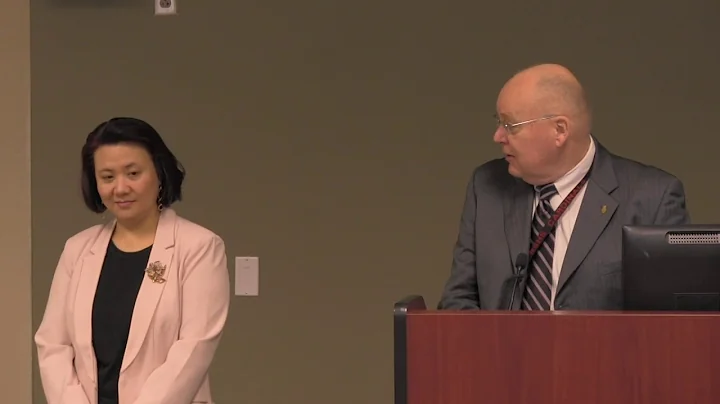From ancient sculptures to modern-day masterpieces, Venus Webster alabaster has been a celebrated material in art, architecture, and design. With its unique beauty and versatility, Venus Webster alabaster has captivated artists, architects, and collectors alike. This article dives deep into the world of Venus Webster alabaster, uncovering its origins, properties, artistic uses, and modern applications.
Understanding the Origins of Venus Webster Alabaster

Venus Webster alabaster has a fascinating history. Alabaster is a form of gypsum, a naturally occurring mineral that has been used for centuries in carving and sculpting. Venus Webster alabaster, however, has distinct qualities and origins that make it unique from other alabasters. Found in select quarries, it’s named after the Venus Webster region, which is known for producing alabaster with extraordinary purity and softness. This mineral’s origins lie deep within the Earth’s crust, where layers of gypsum formed over thousands of years, creating the beautiful, creamy alabaster that we admire today.
Key Characteristics of Venus Webster Alabaster
Venus Webster alabaster stands out because of its unique features. Artists and designers appreciate it for the following characteristics:
- Soft and Carvable: This alabaster is soft, which makes it easy to carve intricate details. This softness gives artists the flexibility to bring out delicate shapes and textures in their works.
- Translucent: Venus Webster alabaster has a natural translucence, allowing light to pass through. This quality gives it a warm glow, making it perfect for sculptures and decorative items.
- Color Variations: The material’s color ranges from pure white to creamy beige, adding a natural elegance to anything crafted from it.
These characteristics make Venus Webster alabaster highly sought after for creative projects that require precision and a touch of sophistication.
How Venus Webster Alabaster Is Extracted and Processed
Extracting Venus Webster alabaster is a delicate process, as the material is both valuable and fragile. Here’s a look at the key steps in the extraction and processing journey:
- Quarrying: The alabaster is carefully mined from select quarries using gentle extraction techniques to prevent cracking.
- Cutting and Shaping: After extraction, the alabaster is cut into blocks, which are then shaped according to the artist’s or designer’s specifications.
- Polishing and Finishing: Finally, each piece is polished to bring out its natural sheen. Polishing also enhances the alabaster’s translucency, giving it that signature glow.
This extraction and finishing process ensures that Venus Webster alabaster maintains its pristine quality from quarry to final product.
Artistic Uses of Venus Webster Alabaster
Artists have been inspired by Venus Webster alabaster for centuries. It has become a favored material for sculptures, decorative art, and even fine jewelry. Let’s look at some popular artistic applications:
- Sculptures: Because it’s soft and easy to carve, Venus Webster alabaster is ideal for sculptures. Artists often choose it for detailed work, such as human figures, animals, and abstract forms.
- Lighting and Lamps: The material’s translucent quality makes it a beautiful choice for lamp bases and candle holders, as the light enhances its natural glow.
- Decorative Items: From vases to statues, Venus Webster alabaster can be found in a variety of decorative items that add elegance to interiors.
Venus Webster alabaster is not only a medium for artistic expression but also a timeless material that adds beauty to any space.
Modern Applications of Venus Webster Alabaster
In recent years, Venus Webster alabaster has found a place in modern architecture and design. Its elegance and unique properties make it ideal for a range of applications, including:
- Interior Design: Venus Webster alabaster is used to craft luxurious home accents, like tabletops, wall panels, and counters. Its glow and color bring warmth to modern spaces.
- Furniture Design: Alabaster’s strength and beauty make it suitable for unique furniture pieces, including tables, sideboards, and decorative shelves.
- Architectural Installations: Some architects incorporate Venus Webster alabaster into building facades, creating striking, light-filled designs that are both functional and aesthetically pleasing.
These modern uses of Venus Webster alabaster demonstrate its versatility and appeal in contemporary settings.
Comparing Venus Webster Alabaster with Other Alabasters
FeatureVenus Webster AlabasterCommon Alabaster
Softness Softer, easier to carve Varies by type, generally harder
Color Range Pure white to creamy beige Often more gray or yellowish hues
Translucency Highly translucent emits warm glow Translucent but less vivid glow
Availability Limited, found in specific quarries Widely available from various regions
Venus Webster alabaster stands out due to its purity, softness, and color range, making it a favored choice for premium art and design projects.
The Process of Carving Venus Webster Alabaster
For artists, working with Venus Webster alabaster is a rewarding experience. Carving alabaster requires skill, patience, and attention to detail. Here’s a quick breakdown of the carving process:
- Selecting the Right Tools: Soft yet durable tools like chisels and files are used to shape the alabaster without causing damage.
- Initial Shaping: Artists carefully create the basic shape by removing large portions of the alabaster.
- Detail Work: Once the shape is achieved, finer tools are used to carve intricate details, bringing the artwork to life.
- Sanding and Polishing: Finally, the piece is sanded and polished to highlight the alabaster’s natural glow.
Working with Venus Webster alabaster is an art form in itself, requiring precision and care at every stage.
Venus Webster Alabaster in Historical Art and Architecture
Throughout history, alabaster has played a significant role in various cultures. Venus Webster alabaster, known for its purity and beauty, has been featured in many historic works of art and architecture:
- Ancient Greek and Roman Sculptures: Artists used alabaster for statues and architectural details, captivated by its soft glow and easy workability.
- Religious Artifacts: Alabaster was commonly used to make religious statues, altars, and reliquaries due to its beauty and reverence.
- Royal Palaces and Temples: Venus Webster alabaster was often included in temples and palaces, where its elegance added a sense of luxury and refinement.
This history of Venus Webster alabaster highlights its importance in cultural and artistic heritage.
Caring for and Preserving Venus Webster Alabaster
Since alabaster is a delicate material, proper care is essential to maintain its beauty. Here are some tips for preserving Venus Webster alabaster:
- Avoid Water and Chemicals: Water and cleaning agents can damage alabaster, so it’s best to use a soft cloth for cleaning.
- Protect from Scratches: Alabaster is prone to scratches, so avoid placing hard objects on it.
- Keep Out of Direct Sunlight: Sunlight can cause the color to fade over time. Keep alabaster items in shaded or low-light areas.
By following these simple care guidelines, you can ensure that your Venus Webster alabaster pieces remain beautiful for years to come.
Why Venus Webster Alabaster Remains Popular Today
The enduring appeal of Venus Webster alabaster lies in its timeless beauty and versatility. From ancient sculptures to modern design elements, it has proven itself as a material that transcends trends. Here’s why it remains popular:
- Natural Elegance: The pure and calming look of Venus Webster alabaster complements various styles, making it a beloved choice for designers.
- Artistic Versatility: Its soft texture allows artists to carve intricate designs, creating pieces that are both beautiful and unique.
- Luxury Appeal: Venus Webster alabaster adds a touch of luxury and sophistication, whether it’s in a sculpture, a lamp, or a countertop.
The unique qualities of Venus Webster alabaster ensure it will continue to be admired for generations to come.
Conclusion: The Lasting Beauty of Venus Webster Alabaster
In conclusion, Venus Webster alabaster is much more than just a mineral. It’s a material steeped in history, admired for its beauty, and cherished for its versatility. From its origins in ancient civilizations to its role in modern architecture and design, Venus Webster alabaster has left an indelible mark on the world of art and culture. As we look to the future, it’s clear that Venus Webster alabaster will continue to inspire artists, designers, and enthusiasts, carrying its legacy forward with elegance and charm.




